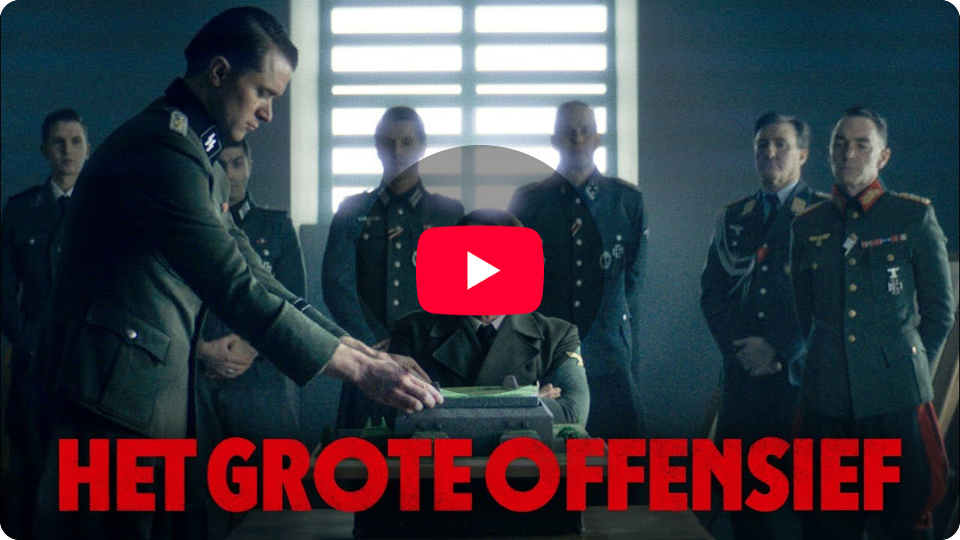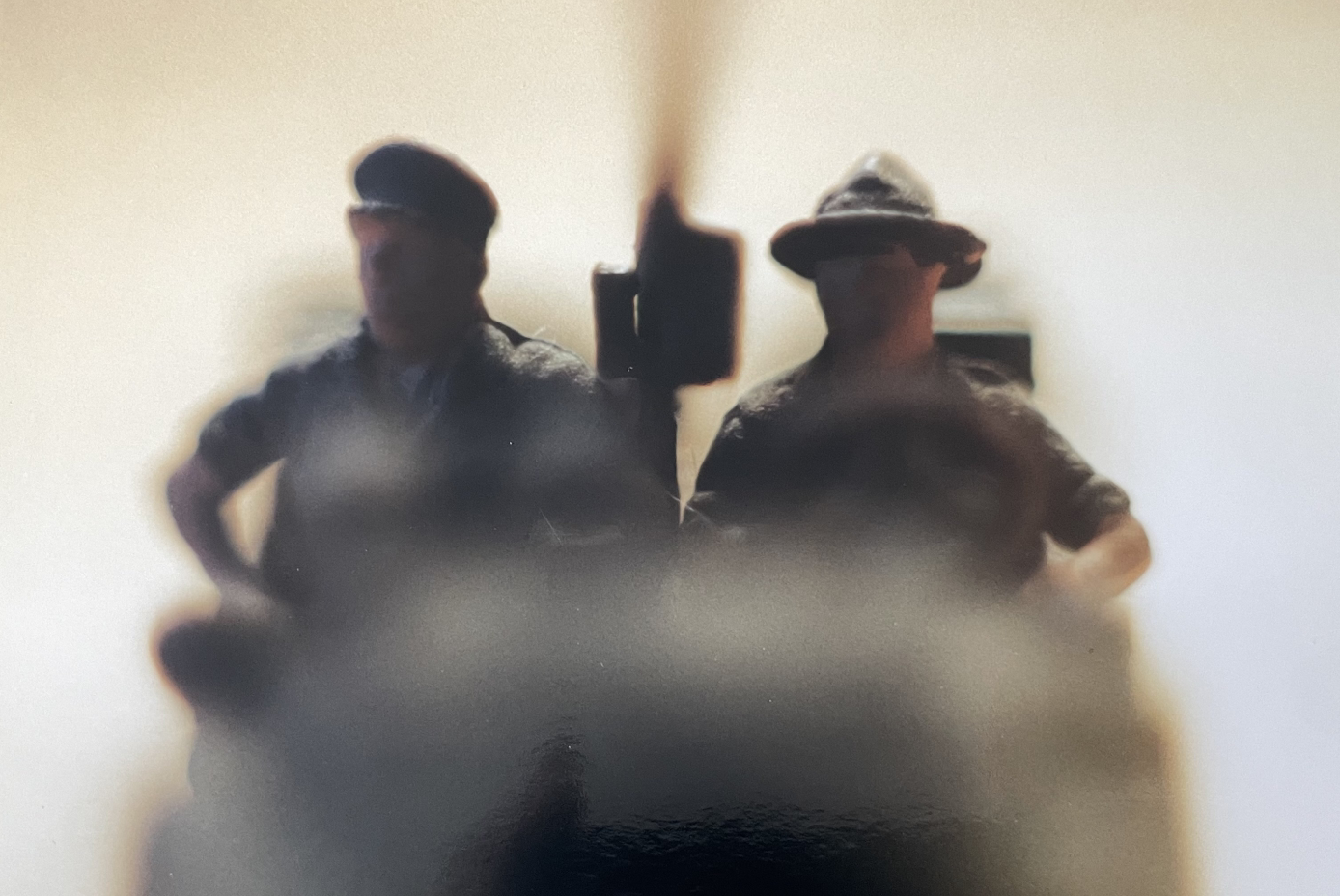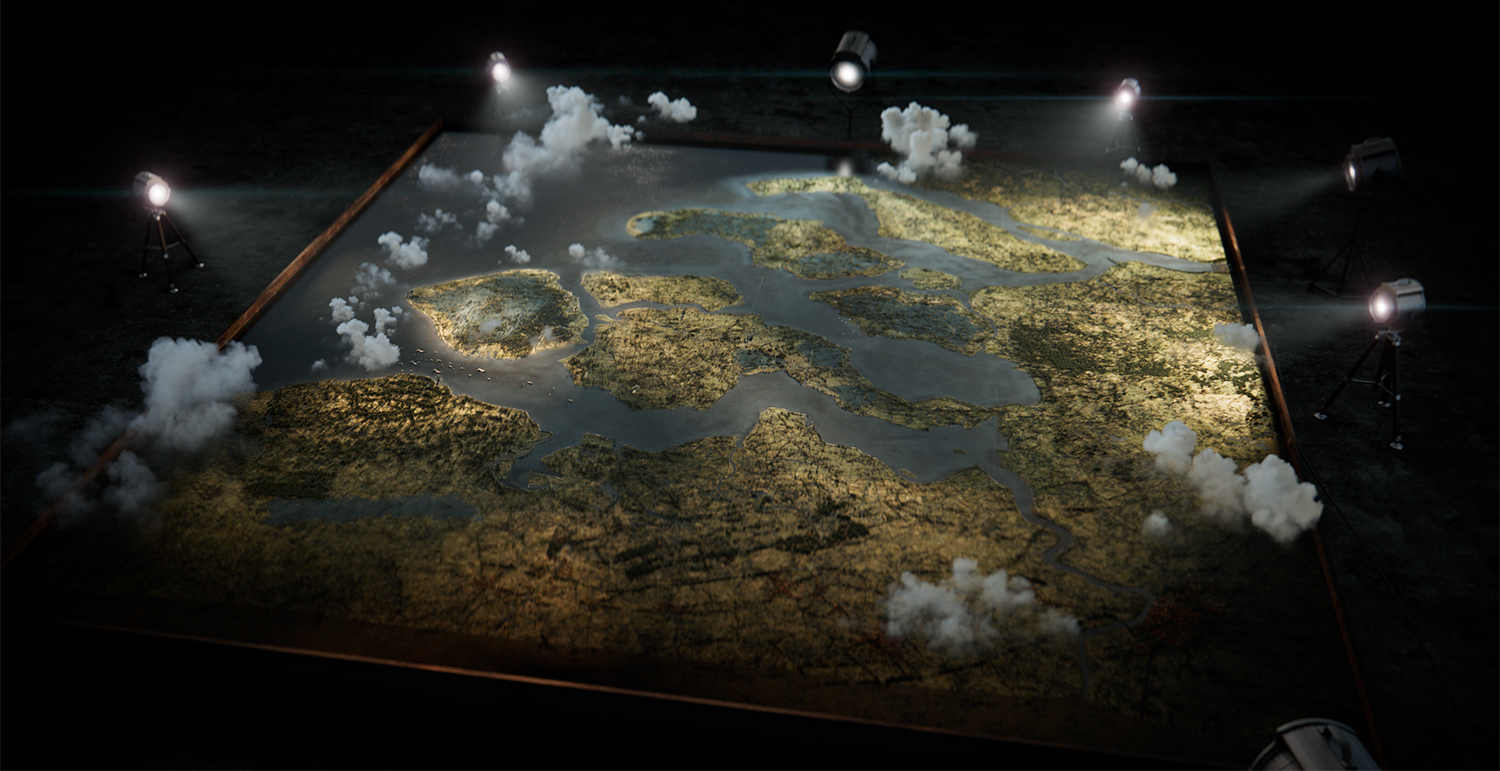BEHIND 'HET GROTE OFFENSIEF' 1/3 🪖🎥
Ok, so the last year I've been working on something I had never done before. Or something I hadn't done in a long, long time, but that's a matter of how you look at it. In any case starting this Sunday September 7 you can watch my latest work Het Grote Offensief (The Great Offensive) on Dutch national TV (NPO1, 21.20hrs to be exact). A three-part historical series juggling drama, archive footage, VFX and cartography in a mesmerizing never-been-done-before mix telling the epic story of how the liberation of Zeeland in 1944 became a complete clusterfuck. Het Grote Offensief is produced by Dark Alley Pictures in co-production with Lunamine and EO. If you haven't heard or seen anything about it, earlier this year a shorter-but-not-as-good-as-the-3-part-episodical feature film was released with this just-a-lil-bit bombastic trailer:
Since it's been a crazy ride and the project consists of so much different visual elements, I thought it would be a nice idea to tell you some more about what it took to bring this project to life. And since I've cut Instagram out of my life I decided to do it in the form of a newsletter tryptich, accompanying the episodes aired consecuetively on Sunday September 7, 14, and 21. Each newsletter covers a different visual element of the project. This first one is about the story behind the scale model of Zeeland we've build. The second will take you behind the studio sets and how they came about. And last but not least the final one will feature some insights I had while digging in the archive footage of war correspondents of World War II. Buckle up for the first story: what it takes to build a detailed model of Zeeland as it was in 1944. March '24 Matthijs van Heijningen hit me up because he was searching a director for a project he was developing with writer Maarten van der Duin. On the cover of their pitch was one picture:
I hear you think: "Old white grey men, that's awesome!" At least, that was what I thought. What do we see? We see a.o. Bertram Ramsay, Dwight D. Eisenhower, Bernard Montgomery, and Walther Bedell Smith during the final planning of Operation Overlord aka D-Day. Pretty crazy to realize that it is in rooms like this that history was actually written. It almost looks like a Wes Anderson still, doesn't it? To be honest, Matthijs & Maarten had me with this picture like Jerry Maguire with his "Hello". The picture took me straight back to my childhood days of model-making. Being not that gifted with visual skills like painting or drawing I turned to re-creating World War II sceneries with scale models of tanks, planes, bunkers, soldiers, etc. I even had a big basin in my room filled with sand and stuff to actually imitate the D-Day landings in Normandy, and photographed it using an old analogue camera. Of course I've tried to find those pictures but the only print I managed to dig up is this abstract medium twoshot I shot of two Australian soldiers in Willy's Jeep using a macro lens.
But when I started reading the scripts of Maarten, I realized pretty quickly that besides maps and archive footage we needed something else to help the viewer to get grip on the complicated geographic setting of our story. Because who the hell knows where South-Beveland, Zeeuws-Vlaanderen, Walcheren, West-Brabant, or De Schelde are besides people who actually live there? Yes, that's right, no one does. That's why Maarten wrote epic aerial transitions between scenes that take you from location to location and storyline to storyline. But from a geographical perspective Zeeland has changed significantly since 1944. What once were islands are now one peninsula. Other parts are also drained. Heavy industry has settled. Complete harbors have been build. No way we could actually shoot these sequences live action (if we would have had the means to do that, but that's another story). So although I hadn't thought about it for a while, this memory of my old basin popped in my head. But having an idea is one thing, executing it is another. Luckily Matthijs brought in Tim Smit, the equivalent of me being able to make this to what Gandalf is to the fellowship of the ring escaping the Balrog if you ask me. Pretty fucking essential. We started discussing how to actually do this, in which style, and if we had to build it for real or completely in a personal computer. Since 'the analogue' as concept was really important to me in this project (but also in general, by the way) my strong preference was to do the first. But a quick estimate of Tim told us it would mean building a basin of 2.500sqm so bye bye to that idea. VFX was the way. But which style? A part of me leaned towards the nerdy DIY model-making look, but this other part had a hunch there were also other ways to do it. And while doing my own researching I stumbled upon a science paper with the title 'Allied Military Model Making during World War II' by Alastair W. Pearson. And when I started reading it my brain exploded. Why? Well, read the abstract yourself:
Once again, science saved the day. Of course! In 1944 there was no Google Earth. No satellite intel. No 3D computer software. Just good ol' analogue technology. So that was the only thing at hand when planning military operations or precision bombardments, and that was basicly exactly what we wanted to do. Somewhere in the essay I even read the following which really got my heart pumping: "The Canadian Army made a number of models during the operations to liberate The Netherlands". Literally our story! So of course we tried to find these models. Unfortunately we weren't able to locate any of them. But in the article I also found some blurry black and white pictures of models that did survive history. One of them was a beautiful model created for a precision bombardment of an important archive in The Hague containing a lot of privacy data on Dutch citizens. This building was located right next to the Peace Palace and in the middle of the city. In order to instruct the airforce pilots and keep civilian damage as limited as possible this model was created. So I turned to the Imperial War Musuem in England and was able to find this exact model in their absolutely amazing online archive (big S/O to the IWM). This is what it looked like, filled with beautiful flaws and details:
This was my Eureka! moment. This is what our model of Zeeland had to look like. It became our key inspiration. Later on I found this Dutch article about the actual bombardment this model was made for. Turned out it wasn't able to prevent much harm: at least 62 civilians were killed by the bombs and the fire they started in the streets surrounding the building. Makes you think of the true value of privacy data by the way. If you extrapolate that to our times... Any way, now we found the main inspo for our Zeeland model, some other bridges had to be crossed. Tim and his team did a deep dive to get as much geographical and historical data, old maps and pictures as they could get their hands on. Turns out you have amazing sites like DotKa Originals where you can find all aerial pictures of western Europe shot by the RAF in the second world war. Using all that data they were able to recreate Zeeland as it was in 1944, and it turned into a model that looks like this:
This is a pretty wide bird's-eye perspective, but we also wanted to go in deep, in great detail. And the good thing of having it in the computer is that we could also do other things. Bomb it, blow up bridges, flood it. And so we did. During an intensive previz and pre-production process we determined camera angles and moves, animation style (how to project movements of troops etc. on it), transitions, and 100 other things. It resulted in absolutely amazing sequences, with also great transitions to live action scenes and vice versa which I consider a personal visual tour de force of everyone involved. I hope this pretty long newsletter tickles your imagination to tune in this Sunday at 21.20hrs to NPO1 (unfortunately no English subs yet) or afterwards via NPOstart at a moment that maybe suits you better. If you're not interested in my other epistles, just hit that unsubscribe button. No grudges taken. That being said I will leave you with a selection of previz stills versus final shots, which I will let speak for themselves. Enjoy your weekend! ❤️🎥
|

You’re on this mailinglist because I like you.
Subscribe to get future newsletters.











